Repost from The Climate Scam site, showing the remarkable correlation between solar radiation (modulated by clouds) and temperature in Sweden (google translation from Swedish).
Figure 7 - The summer temperature and solar radiation as line graphs
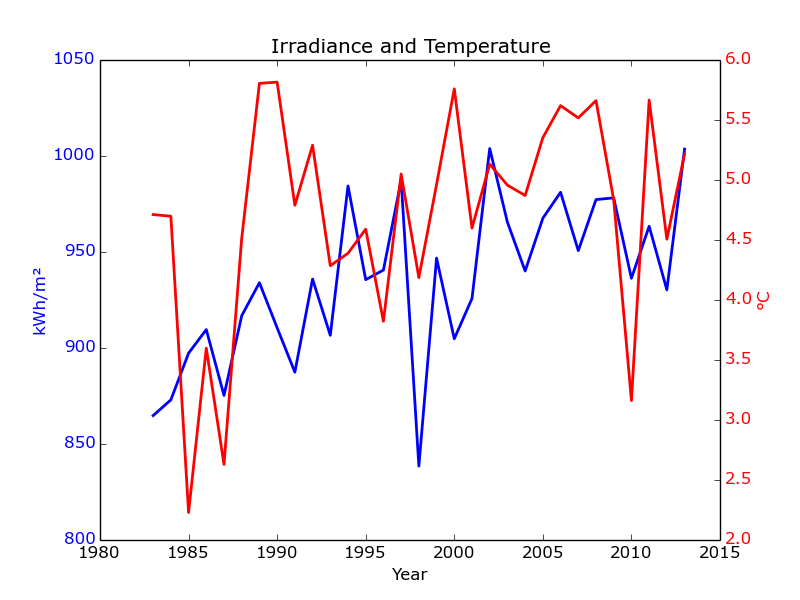
Figure 1 - annual solar radiation from SMHI and temperature from ECMWF (ERA-Interim). The lines show the average values for the towns of Kiruna, Luleå, Umeå, Östersund, Karlstad, Stockholm, Visby and Lund, 1983 - 2013
In the figure above you can see that on a yearly basis seems higher insolation give higher temperatures, but there are also large variations which must be explained in other ways. One must remember that it is not only the sun that affect our temperature. It will also large amounts of energy to us here in Sweden by the winds. To get a better picture of the situation goes, I therefore over to analyzing the data on seasonal basis (summer, fall, winter, spring) instead.
Why has solar radiation increased?
A hypothesis why solar radiation has increased is that the amount of aerosols have declined recently after having increased during the 1950-70's. This explanation fits very well into växthuseffekts hypothesis because it can not explain why the temperature dropped during the 1950-70 centuries otherwise.
But solar radiation is also affected very much by the amount of clouds. From ECMWF (ERA-Interim), one can get access to the amount of clouds that have been calculated in the same way as you do when you make weather forecasts. These values should therefore be free from the influence of aerosols. Below are the solar radiation as a function of the proportion of clouds for the four seasons (click the figures for larger size).
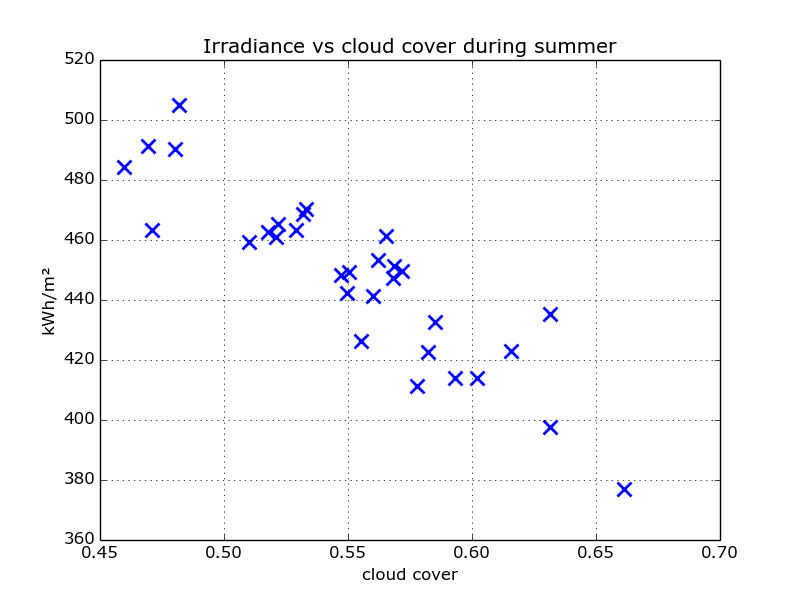 |  |
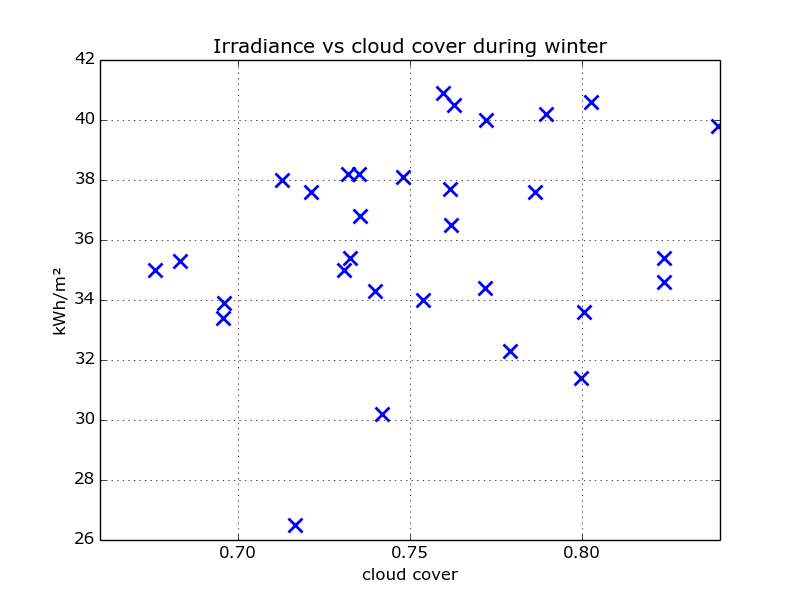 | 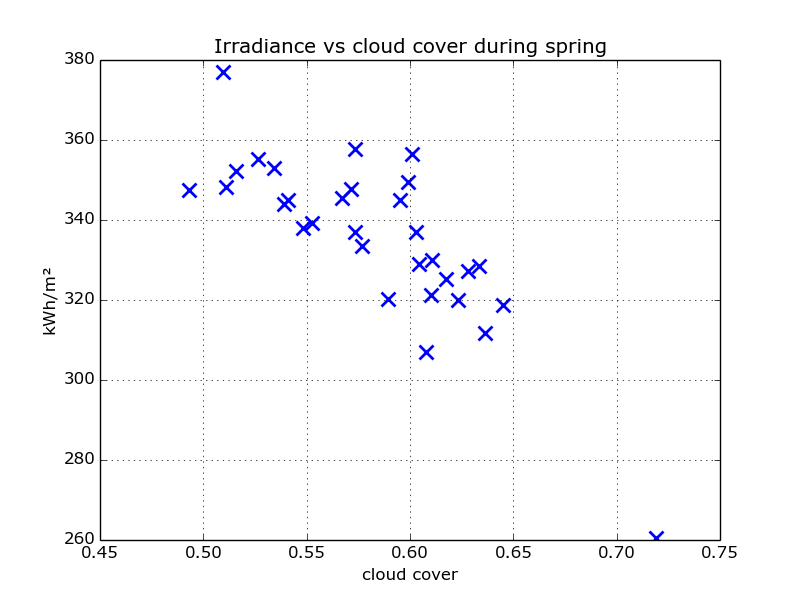 |
Figure 2 - Solar radiation as a function of cloudy 1983-2013. The points show the average values for the towns of Kiruna, Luleå, Umeå, Östersund, Karlstad, Stockholm, Visby and Lund.
For summer and spring seems to be a very strong connection between rain and solar radiation.Less cloud gives more sun. The relationship is somewhat weaker for the fall, but winter seems ratio should be the opposite. More clouds giving more "sun". The explanation for this is probably that even the long-wave radiation from the clouds measured. And during the winter when the sun's rays are weak, the radiation from the clouds to break through in the statistics.
I asked a question SMHI which wavelengths included in the measurement and got the following response:
" Most of this energy is in the wavelength range 300-4000 nm and distributed roughly 8 percent in the ultraviolet (UV), 48 percent in the visible and 44 percent in the near-infrared (IR) portion of the spectrum outside the Earth's atmosphere. "
The conclusion from this simple exercise is that there seems to be a strong link between cloud cover and solar radiation and therefore ought aerosol hypothesis could be written off. It has atleast not critical. It is thus that the weather patterns have changed and it has given us more sun.
Does increased insolation provide higher temperatures?
Let's look at how the temperature has been affected by solar radiation. Below are the four seasons with the temperature as a function of solar radiation.
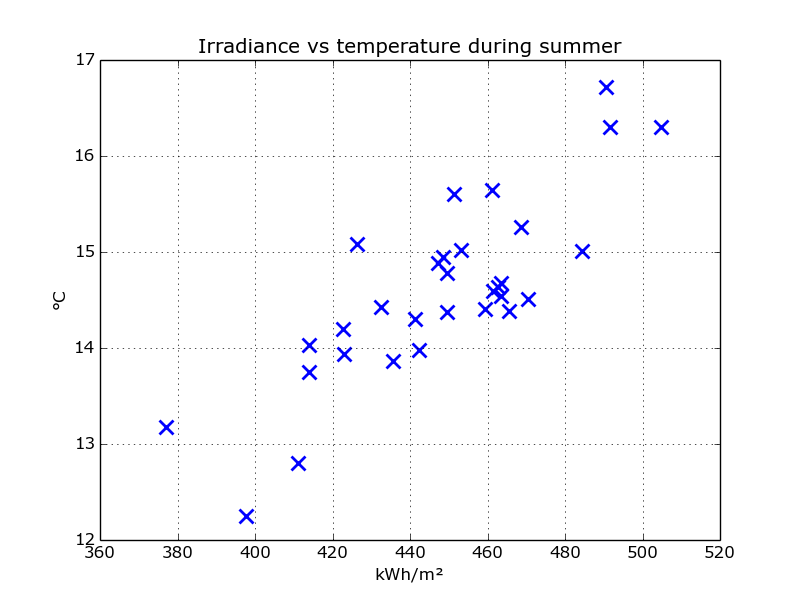 | 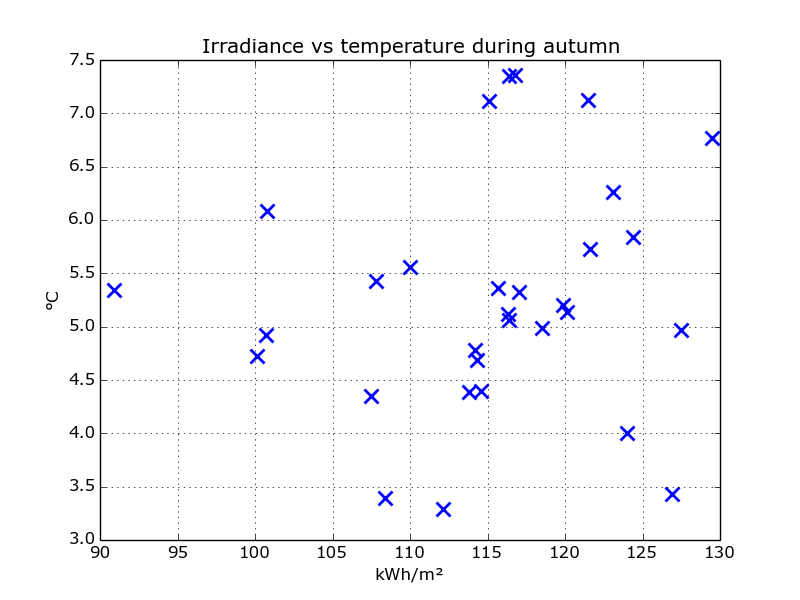 |
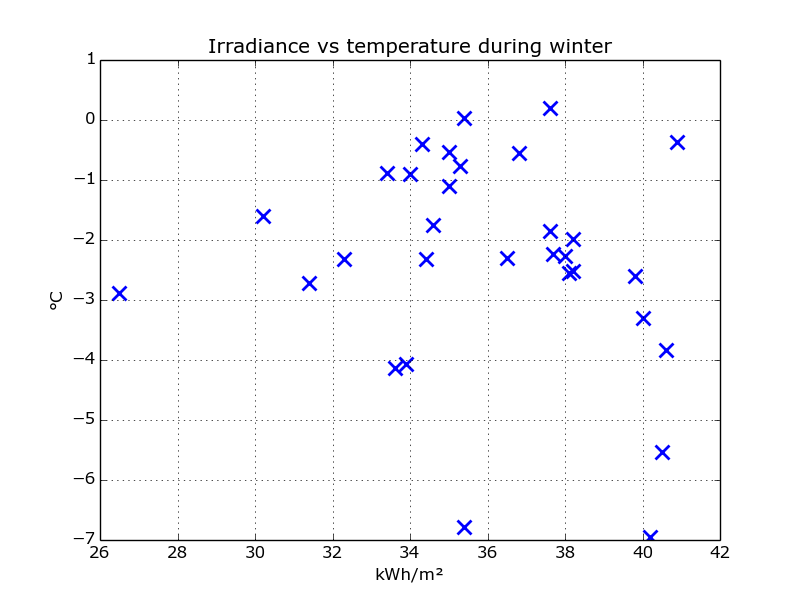 | 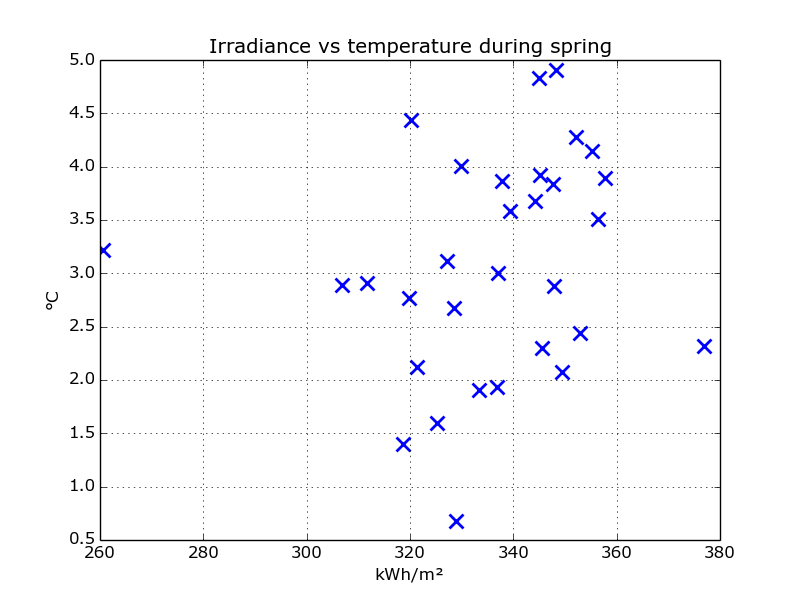 |
Figure 3 As temperature as a function of solar radiation 1983-2013.
There seem to be a strong link between solar radiation and temperature during the summer.But this access seems to be missing for the other seasons.
The handyman can also figure out the "climate sensitivity" from summer figure, and one can then validate whether the IPCC 4 W / m2 at doubling of carbon dioxide could provide several degrees higher temperature.
From ECMWF can also get values for wind at 10 m height. Below are the temperature as a function of the southern and western wind:
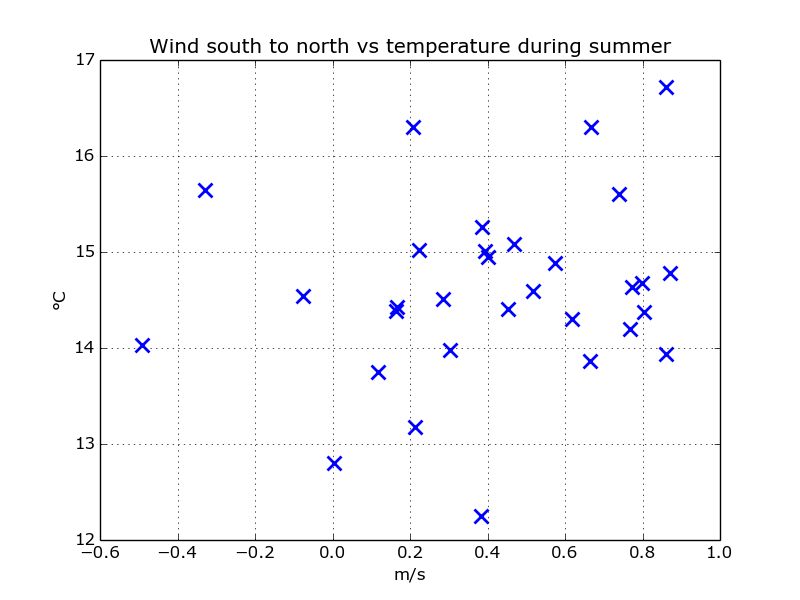 | 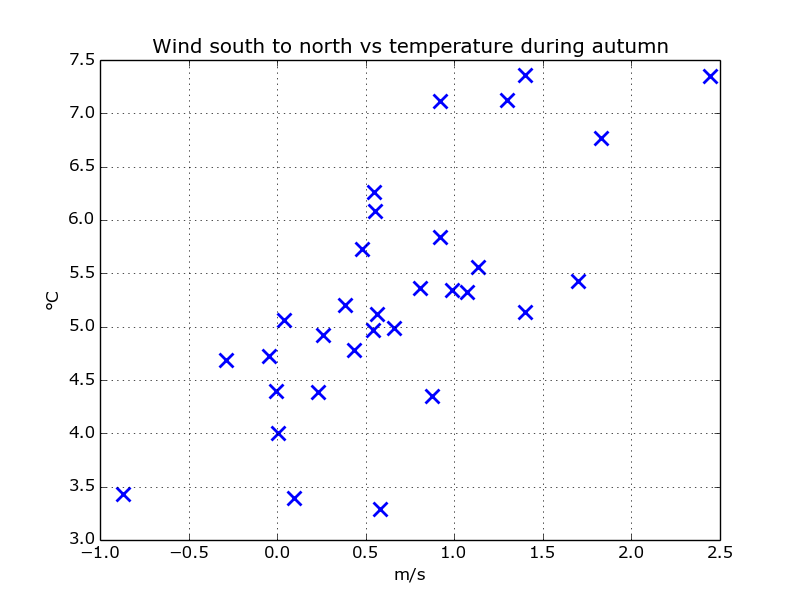 |
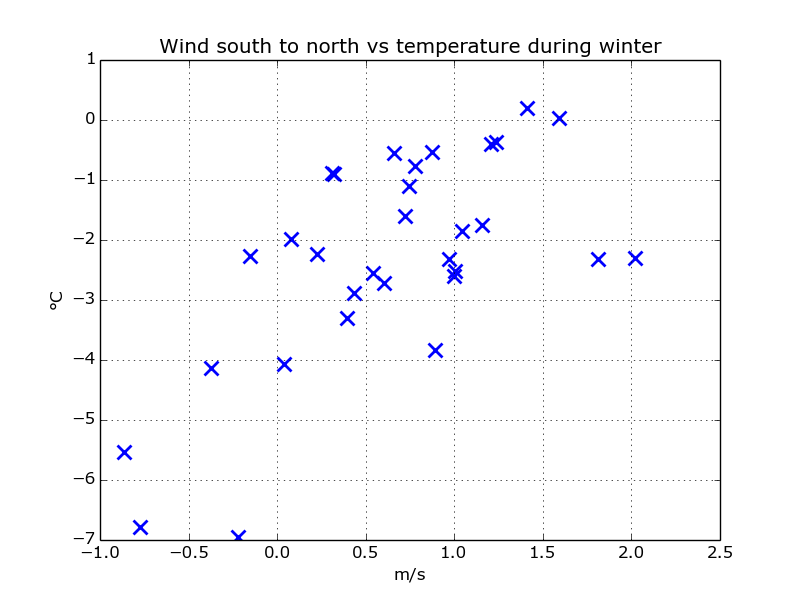 |  |
Figure 4 As temperature as a function of the southerly wind 1983-2013.
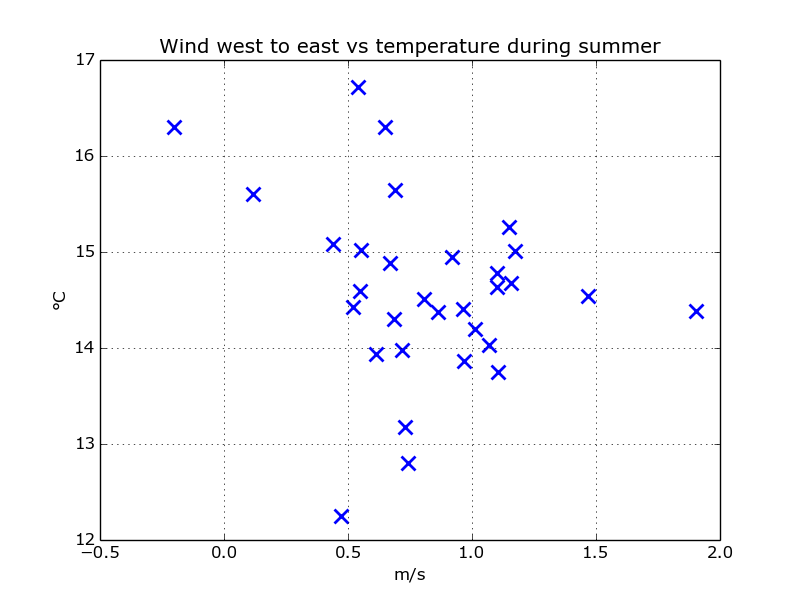 |  |
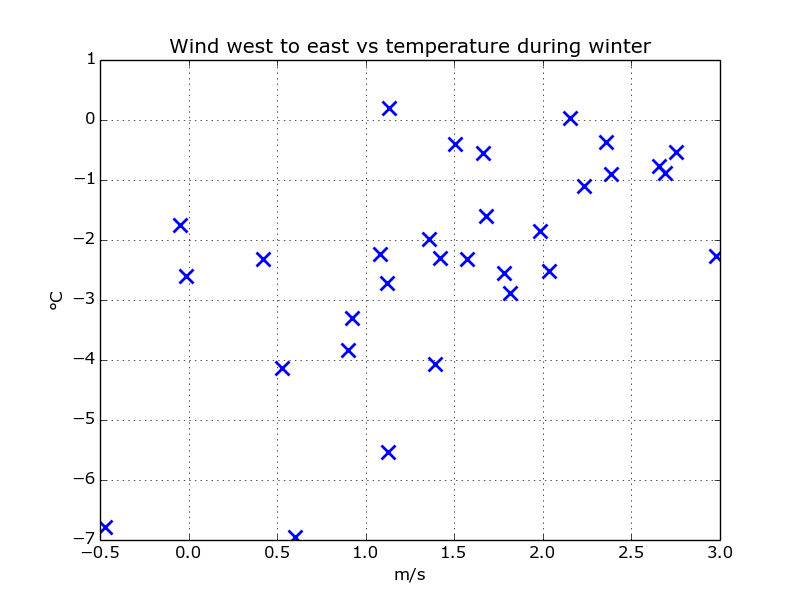 | 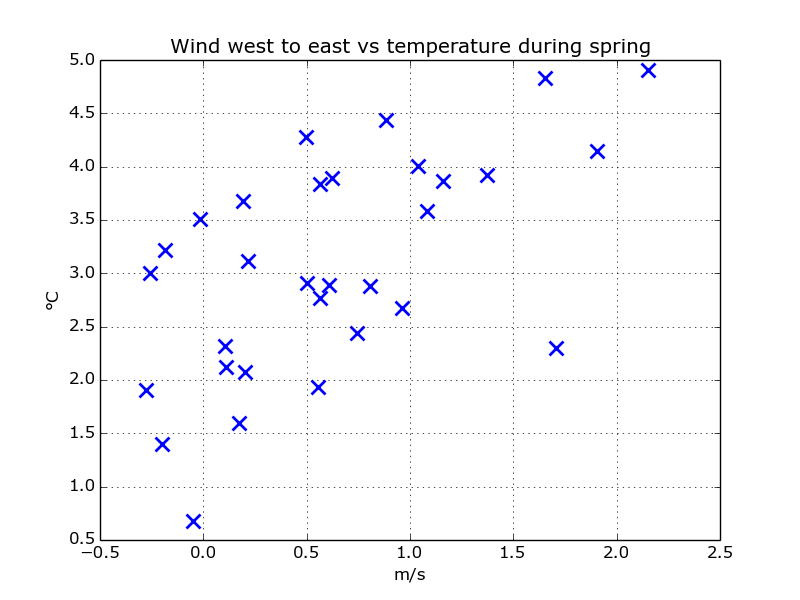 |
Figure 5 As temperature as a function of the westerly wind 1983-2013.
Here there seems to be a link between southerly winds and temperatures for autumn and winter. There also seems to be a link between the western wind and spring temperature. But perhaps many factors that affect spring temperature being unable to find any strong determining factor.
An example of how the southerly wind has increased during the winter are shown below.
It is thus not surprising that we get "bad" winters if the wind blows from the south and not from the north. And this is not something we can blame the carbon dioxide.
Conclusions
Solar radiation in Sweden has increased since the early 1980s. Maybe it has increased even earlier but I have no good measurements prior period. The increased solar radiation appears to be strongly linked to reduced cloud cover. It is thus needed no aerosol hypothesis to explain the increased solar radiation.
The increased summer temperatures in Sweden seems to be strongly linked to the increased solar radiation. Autumn and vårtemperaturerna other hand, is linked to the increased southerly wind. The picture is somewhat more complicated for spring, but the increased westerly wind seems to have a meaning.
We can thus explain most of the increased temperature in Sweden to changing weather patterns. If the carbon dioxide level has a bearing on the temperature this meaning is much smaller than the natural variation.
I have only shown a selection of all graphs I have developed. If you want to watch more graphs, there is a zip file here .
Update 2015-01-20 9:00:
On "Sunglasses" request show me this character how well the summer temperature and solar radiation are similar
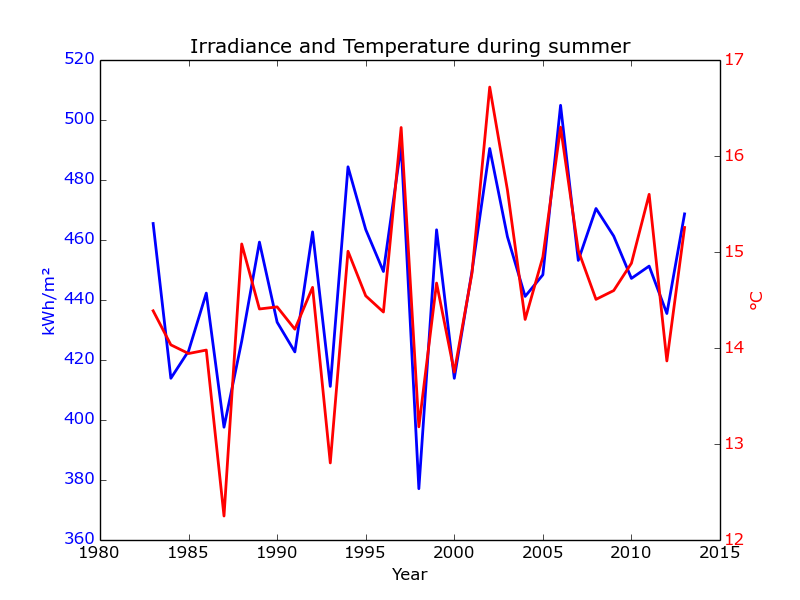

No comments:
Post a Comment